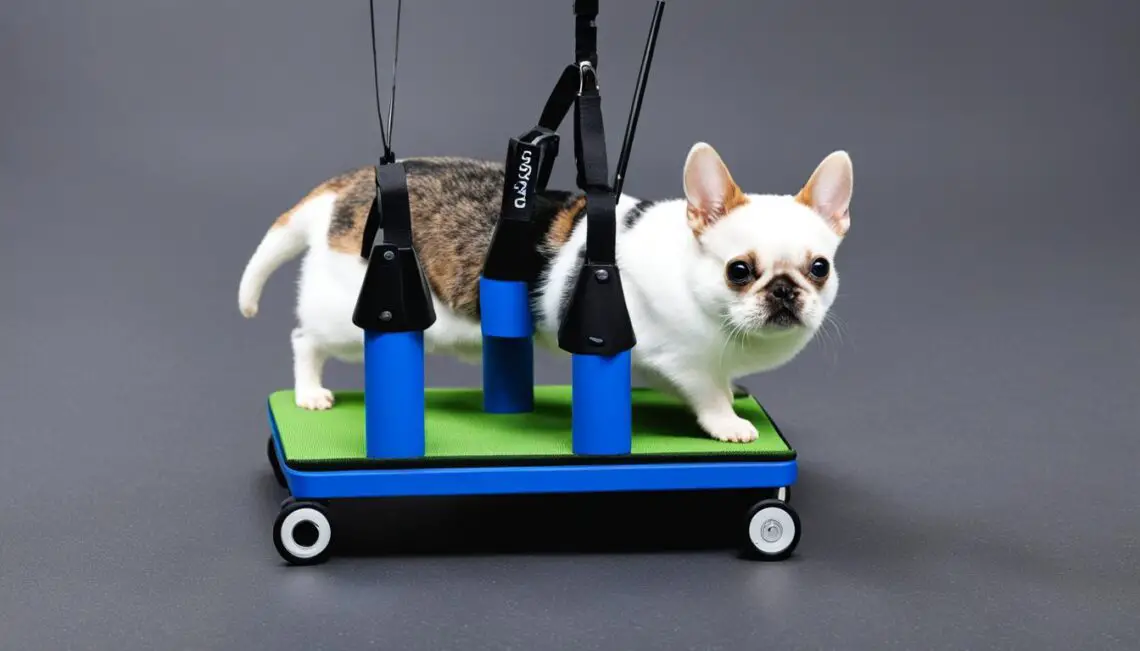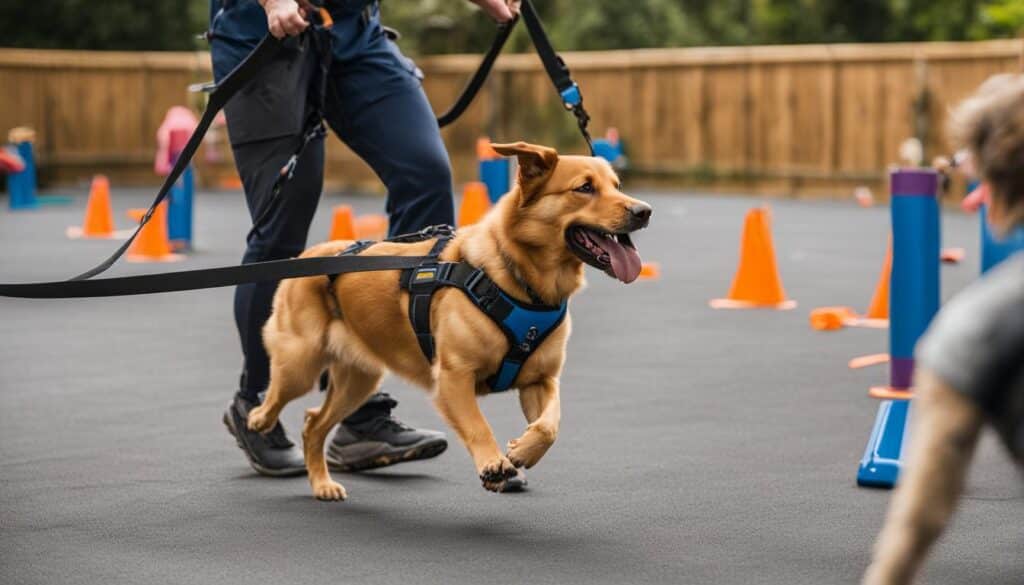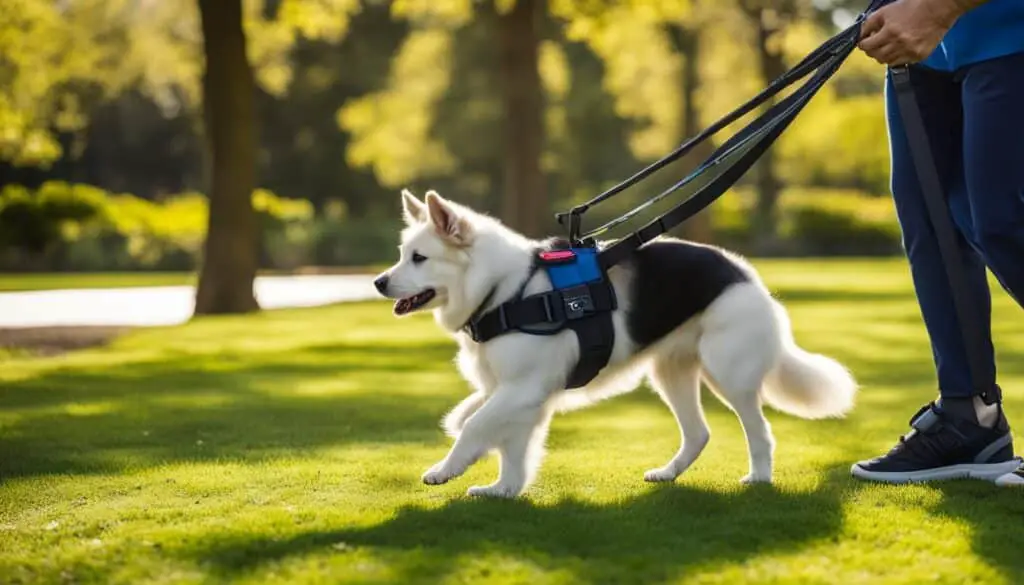Training small pets with special needs requires a compassionate and tailored approach. By understanding their limitations and utilizing their remaining senses, it is possible to effectively train them and enhance their well-being. Obedience training can be adapted to accommodate disabilities such as hearing impairments, blindness, and mobility challenges. Before starting training, it is crucial to learn more about the specific disability and its causes. This will help set reasonable expectations and allow for appropriate communication.
Short and engaging training sessions, mixed with playtime, can provide the best results. Positive affirmation should be used instead of punishment, and tools such as hand signals and sound cues can aid in communication. Regular rewards and the use of tools like head collars and harnesses can further enhance the training experience. It is important to be attentive and observant of the pet’s responses, as some cues may be subtle. Prioritizing obedience instructions such as sit, come, stay, calmness around other pets, walking on a loose lead, and maintaining manners can help establish a strong and positive relationship with a handicapped pet.
Key Takeaways:
- Training small pets with special needs requires a compassionate and tailored approach.
- Understanding the specific disability that a small pet has can inform training modifications and strategies.
- Utilize visual cues and hand signals for dogs with hearing impairments.
- Scent-based training and physical contact are beneficial for dogs with visual impairments.
- Training strategies for dogs with mobility challenges should focus on accommodating their physical limitations.
Understanding Disabilities in Small Pets
Small pets, like dogs, can face disabilities that may be congenital, contracted, or the result of an injury. Some common disabilities in small pets include hearing impairments, blindness, and mobility challenges.
Hearing impairments in small pets can be caused by chronic ear infections or structural ear issues. These conditions can affect the pet’s ability to hear and respond to auditory cues. Blindness, on the other hand, can result from congenital diseases, untreated eye infections, aging-related cataracts, or other factors. Pets with visual impairments may have difficulty navigating their surroundings and rely on their other senses to compensate. Mobility challenges in small pets can be the result of spinal cord injuries, diseases, or limb amputations, limiting their physical movements.
Understanding the specific disability that a small pet has is crucial for tailoring training modifications and strategies to accommodate their unique needs. By acknowledging and addressing these disabilities, pet owners can provide the necessary support and assistance to enhance their pets’ quality of life.
Hearing Impairments in Small Pets
Deafness can significantly impact a small pet’s ability to understand and respond to verbal commands. However, it is essential to remember that deaf pets can still lead fulfilling lives and be trained effectively.
“Deaf pets can still lead fulfilling lives and be trained effectively.”
When training small pets with hearing impairments, visual cues and hand signals are invaluable tools for conveying commands and expectations. These visual cues can help bridge the communication gap caused by the pet’s inability to hear verbal instructions.
Example:
| Verbal Command | Visual Cue/Hand Signal |
|---|---|
| Sit | Hold your hand up with the palm facing upwards. |
| Stay | Extend your arm with an open palm in a stop gesture. |
| Come | Wave your hand towards your body. |
Clicker training can also be beneficial for dogs with hearing impairments. By associating the clicker sound with a reward, pets can understand when they have successfully performed a desired behavior.
Positive reinforcement methods, such as using treats or praise, should be consistently applied to reinforce desired behaviors. Patience, understanding, and repetition are key when training a deaf pet, as they rely on visual cues and gestures to understand what is expected of them.
Blindness in Small Pets
Blindness can present unique challenges in training small pets. However, with the right strategies, they can still learn and adapt to their environment.
“Blind pets can still learn and adapt to their environment with the right strategies.”
When training pets with visual impairments, scent-based training can be highly effective, as dogs have a keen sense of smell. Creating a scent map of the home can help the pet navigate safely and become familiar with the layout.
Image:
Using aromas like vanilla on corners and objects can provide cues for the pet to navigate and recognize certain areas. Physical contact and touch can also provide guidance and reassurance to blind dogs.
Adaptations such as “halos” or structures that extend beyond the pet’s body can prevent accidents and help guide them through new spaces. These adaptations act as physical barriers, providing additional sensory feedback and enhancing the pet’s spatial awareness.
Mobility Challenges in Small Pets
Pets with mobility challenges require training strategies that consider their physical limitations while promoting their overall well-being.
“Training strategies for pets with mobility challenges should consider their physical limitations while promoting their overall well-being.”
Training sessions for pets with mobility challenges should be adjusted to ensure their comfort and avoid overexertion. Incorporating breaks and a variety of exercises that target different areas of their bodies can help maintain their physical fitness without causing undue strain.
In addition to physical exercises, gentle stretches focused on the shoulders, hips, and back can help improve flexibility and mobility for pets with mobility challenges.
Example:
| Exercise | Description |
|---|---|
| Shoulder Stretch | Hold the pet’s front leg and gently lift it forward, then hold the position for a few seconds before releasing. |
| Hip Stretch | Hold the pet’s hind leg and gently lift it backward, then hold the position for a few seconds before releasing. |
| Back Stretch | Gently press down on the pet’s upper back, applying a gentle and steady pressure, then release. |
Training instructions should be complemented with hand signals or sign language for deaf pets to effectively communicate commands. Adjusting the pet’s diet to support their age-appropriate needs and overall health can further contribute to their well-being and training progress.
By understanding and accommodating the disabilities that small pets may face, pet owners can provide the necessary support and create a training environment that enhances their pets’ abilities and quality of life. With patience, consistency, and the use of appropriate training techniques, pets with disabilities can thrive and enjoy fulfilling lives.
Training Strategies for Dogs with Hearing Impairments
When training a dog with a hearing impairment, it is important to utilize their other senses, such as sight and smell. Visual cues and hand signals can be highly effective in conveying commands and expectations. Clicker training, where a clicker sound is associated with a reward, can also be beneficial.
Positive reinforcement should be used consistently to reinforce desired behaviors. It is important to be patient and understanding, and to provide plenty of positive affirmation and rewards when the dog responds correctly.
Incorporating tools like vibrating collars or stomping on the floor to get the dog’s attention can also aid in training.
“Training a deaf dog requires consistency, patience, and a deep understanding of their unique needs. By harnessing their other senses and utilizing positive reinforcement techniques, we can effectively communicate and train deaf dogs, enabling them to lead happy and fulfilling lives.”
Training Strategies for Dogs with Visual Impairments
When it comes to training dogs with visual impairments, it’s important to focus on their remaining senses, particularly their sense of smell. Dogs have incredibly keen olfactory abilities, making scent-based training highly effective in this case.
Creating a scent map of the home can be a valuable tool for helping visually impaired dogs navigate and become familiar with their surroundings. By strategically placing aromas like vanilla on corners and objects, you can provide cues for the dog to safely navigate and explore their environment.
Physical contact and touch can also play a crucial role in training visually impaired dogs. Offering reassurance and guidance through gentle touch can help them feel more secure and build trust. Additionally, adaptations like “halos” or structures that extend beyond the dog’s body can prevent accidents and aid in their navigation of new spaces.
Training a visually impaired dog requires patience, understanding, and the ability to adapt traditional training methods. By utilizing their remaining senses, creating a scent-focused environment, and providing physical support, you can help visually impaired dogs lead fulfilling lives and successfully navigate their surroundings.
Scent-Based Training for Visual Impairments
- Utilize scent mapping to help the dog navigate the home
- Place aromas like vanilla on corners and objects to provide navigation cues
Physical Support for Visual Impairments
- Offer reassuring physical contact and touch
- Consider using adaptations like “halos” for added safety
By incorporating these training strategies, you can help visually impaired dogs adapt to their surroundings, gain confidence, and lead happy, fulfilling lives.
Training Strategies for Dogs with Mobility Challenges
Dogs with mobility challenges require specialized training strategies that take into account their physical limitations. It is crucial to prioritize their comfort and avoid activities that may cause further discomfort or harm to their condition. Here are some effective training approaches to consider:
- Take regular breaks during training sessions to prevent overexertion and provide ample rest for the dog.
- Incorporate a variety of exercises that focus on different areas of the dog’s body, ensuring a balanced workout without putting excessive strain on any particular limbs or joints.
- Implement gentle stretches that target the shoulders, hips, and back to improve flexibility and mobility.
- Utilize hand signals or sign language to communicate commands effectively, especially for dogs with hearing impairments.
- Adjust the dog’s diet to support their age-appropriate needs and overall health. Consult with a veterinarian to ensure the best nutritional plan for their condition.
By employing these training strategies, dog owners can promote their pets’ well-being and enhance their training progress, despite mobility challenges.
Training Exercises for Dogs with Mobility Challenges
It is important to incorporate exercises that cater to the specific needs of dogs with mobility challenges. By focusing on low-impact movements and encouraging muscle strength and flexibility, these exercises can improve their overall mobility and quality of life.
| Exercise | Description |
|---|---|
| Water therapy | Exercises performed in a pool or hydrotherapy tank, which provide buoyancy and reduce stress on joints. Swimming or walking in water can help strengthen muscles without excessive impact. |
| Hills or ramps | Walking up inclines or ramps helps build muscle strength and cardiovascular endurance, focusing on the hind legs and core stability. |
| Puzzle toys | Engaging toys that require problem-solving can keep dogs mentally stimulated while encouraging gentle physical movement. |
| Balance exercises | Using an exercise ball or balance disc, have the dog stand or sit on the unstable surface to engage core muscles and improve balance. |
| Treadmill training | Using a dog-specific treadmill with variable speed settings and incline options can assist in controlled walking or trotting exercises. |
Remember to start these exercises gradually and consult with a professional if needed, as each dog’s abilities and limitations may differ.
Conclusion
Training small pets with special needs requires compassion, patience, and understanding. By adapting training techniques to accommodate their disabilities and utilizing their remaining senses, it is possible to effectively train them and enhance their well-being.
Understanding the specific disabilities and limitations that a small pet may have is essential for setting reasonable expectations and tailoring the training approach. Positive reinforcement, along with the use of tools and adaptations like hand signals, scent maps, “halos,” and vibrating collars, can greatly assist in training.
It is important to be observant and responsive to the dog’s cues, and to prioritize obedience instructions that promote a strong and positive relationship. With dedication and the right approach, training small pets with special needs can be a rewarding experience for both the pet and the owner.
FAQ
How can I effectively train a small pet with special needs?
Training small pets with special needs requires a compassionate and tailored approach. By understanding their limitations and utilizing their remaining senses, it is possible to effectively train them and enhance their well-being. Short and engaging training sessions, mixed with playtime, can provide the best results. Positive affirmation should be used instead of punishment, and tools such as hand signals and sound cues can aid in communication. Regular rewards and the use of tools like head collars and harnesses can further enhance the training experience.
What are some common disabilities in small pets?
Small pets, like dogs, can experience various disabilities that may be congenital, contracted, or the result of an injury. Some common disabilities include hearing impairments, blindness, and mobility challenges. Understanding the specific disability that a small pet has can inform training modifications and strategies.
How can I train a dog with a hearing impairment?
When training a dog with a hearing impairment, it is important to utilize their other senses, such as sight and smell. Visual cues and hand signals can be highly effective in conveying commands and expectations. Clicker training, where a clicker sound is associated with a reward, can also be beneficial. Positive reinforcement should be used consistently to reinforce desired behaviors. Incorporating tools like vibrating collars or stomping on the floor to get the dog’s attention can aid in training.
How can I train a dog with visual impairments?
Training a dog with visual impairments requires focusing on their remaining senses, particularly their sense of smell. Scent-based training can be highly effective, as dogs have incredibly keen olfactory abilities. Creating a scent map of the home can help the dog navigate and become familiar with the layout. Using aromas like vanilla on corners and objects can provide cues for the dog to navigate safely. Physical contact and touch can also be beneficial, providing them with reassurance and guidance.
How can I train a dog with mobility challenges?
Dogs with mobility challenges require training strategies that accommodate their physical limitations. It is important to consider their comfort and avoid overexertion or repetitive physical activities that may worsen their condition. Taking breaks during training sessions and incorporating a variety of exercises can help exercise different areas of their bodies without overstressing them. Gentle stretches can also be beneficial. Adjusting the dog’s diet to support their age-appropriate needs and overall health can also contribute to their well-being and training progress.







No Comments